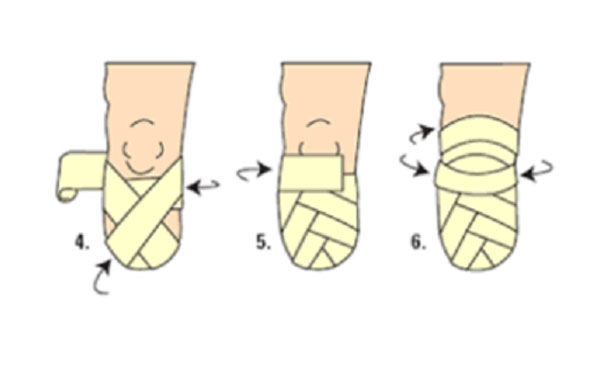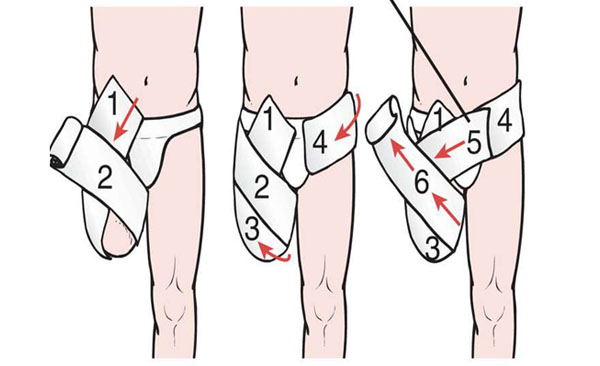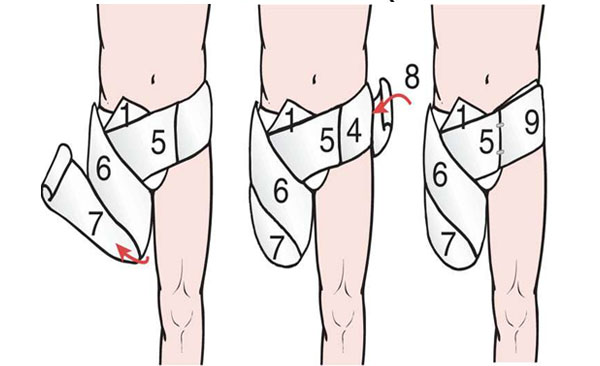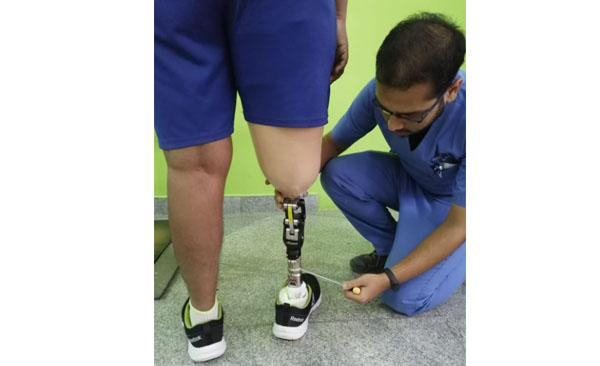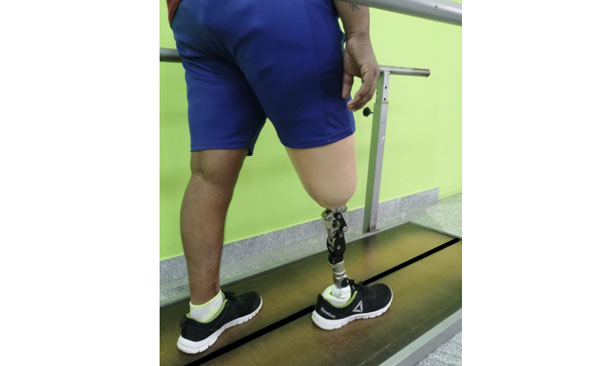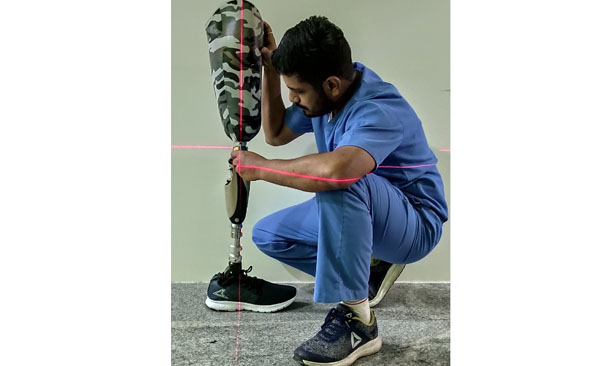Information for Amputees
The loss of body parts has severe implications for a person’s ability to perform activities of daily living.It is very important to prevent falls, strengthen muscles and reduce swelling prior to prosthetic fitting. It is great to be connected with a prosthetist in this stage so you can begin discussing your goals and the type of prosthesis you will receive.
Prosthetic rehabilitation is a complex task that ideally requires input from an interdisciplinary rehabilitation team. Your physiotherapist will guide you aboutpre-fitting physiotherapy for muscles strengthening, bed mobility and transfers and stump/residuum management. Our team will guide you about the management of phantom limb sensation and pain, and also help you in usages of a compression garment or shrinker which significantly helps with phantom pain and shaping your residual limb.
Muscles strengthening
After amputation surgery, you’ll need to stretch and strengthen your residual limb. This will help prevent shortening of muscles and tightening of joints. You need to keep your residual limb strong and flexible in order to use a prosthesis. A physical therapist will teach you exercises to strengthen your lower body. You may begin working with physical therapist before or after surgery. You’ll need to keep doing these exercises once you go home. Follow instructions from the physical therapist closely.
Bed mobility and transfers
After your amputation, you’ll be taught how to do bed mobility and transfer safely. This means learning to move between two surfaces (such as bed and wheelchair). Safe transferring is crucial to prevent falls and protect your wound as it heals. The type of transfer you use will depend on your overall health and strength. Two types of transfers you may learn are slide board transfers and pivot transfers. Your Physiotherapist will guide you about this in details.
Stump Bandaging
Bandaging supports the soft tissues in the early healing phase following amputation. It is during this phase that the efficiency of the vascular system is greatly impaired causing an accumulation of fluid in the stump. Ambulation with the stump in a dependent position causes further accumulation of fluid. Therefore, external support is essential to reduce swelling and providing a proper shape to residual limb for a prosthesis.Initially, the therapist or nurse should wrap the patient's stump. Later the patient should be taught to do this for himself either with assistance from a member of his family or without. For better understanding we have demonstrated how to wrap the bandages on the stump.
Prosthetic fitting and training
After complete healing of the sutures and strengthening of the muscles an evaluation is performed by a prosthetist which includes learning about your pre-amputation activities and future goals. The information gathered by your prosthetist will be used to determine an appropriate design of your prosthesis. Having a proper prosthetic fitting is paramount in obtaining your goals and resuming your normal daily activities. Your stump will be hand-casted to capture the exact shape of your residual limb which will guarantee an intimate socket fit. Before delivery of the final prosthesis, there will be a number of fittings in a diagnostic socket. A diagnostic test socket is used to confirm the perfect fit of the socket. You will walk in the diagnostic test socket aligned on your definitive componentry (knee/foot). During this stage of your prosthetic fitting, the fit of the socket and the alignment will be fine-tuned with the use of LASER alignment tools and then transferred to make the definitive prosthesis. Our Prosthetists will help assist you in learning to walk and gain better mobility and control with your new prosthesis.
You must have seen many people using the artificial limbs and you are still left wondering if you’ll be able to walk again. You are not alone! We want to meet your aspirations and help you to return to the life you love.
A free consultation by our prosthetist can be provided before or after an amputation surgery right in the hospital or your doctor’s clinic. So, feel free to contact us!



